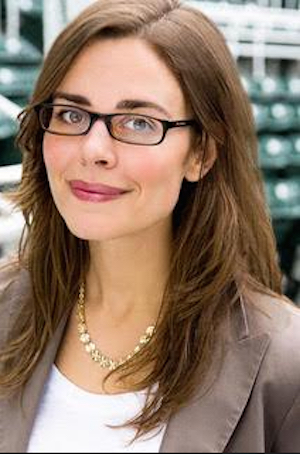‘Lovers and Madmen’: An interview with Lear deBessonet
Director of ‘A Midsummer Night’s Dream’ at the Delacorte and the Founder of Public Works and Resident Director at the Public Theater Speaks to the Eagle

If ever there was summer we could use some diversion, this is it. I began writing this profile of/interview with the Founder of Public Works and Resident Director Lear deBessonet — who is currently in rehearsal for the Public Theater’s Shakespeare in the Park production of “A Midsummer Night’s Dream” starting previews July 11 at the Delacorte Theater — on the day Donald Trump unleashed his vile Twitter attack on Mika Brzezinski and Joe Scarborough. Consequently, before diving into the interview, it seems fitting to digress.
As New Yorkers, we have a cornucopia of cultural offerings spread before us 365 days a year, which means that we tend to become blase about just how exceptional and exciting many of these offerings are. Exhibit A: The Public Theater. Since 1967, when the former Astor Library in Lower Manhattan became the Public’s principal venue and opened with “Hair” (not incidentally, an anti-Vietnam War musical) as its first production, this iconic and beloved arts institution has weathered many political storms, the most recent of which involved Artistic Director Oskar Eustis’ decision in his production of “Julius Caesar” last month to depict Caesar as a blonde Trump-like figure, complete with boxy business suit and long red tie. Fox News and Breitbart went on social media with a campaign against the Public, a campaign that picked up steam and drew supporters, most of whom had not even seen the production. As a result of the controversy, Bank of America and Delta Airlines withdrew their support of “Julius Caesar” and American Express took to Twitter to clarify that its “sponsorship of the Public Theater does not fund the production of Shakespeare in the Park nor do we condone the interpretation of the Julius Caesar play.” Et tu, AmEx? And how ironic that the financial services company’s logo is a centurion. In any event, by 2020 (hopefully sooner) our long collective nightmare will be over. In the meantime, thank God — and Public Theater founder (and Brooklynite) Joe Papp — we have The Public. Long after the golden-haired pretender to the throne has, for the final time, laid his fluffy head on White House pillows, the Public will still be standing, thriving and enriching New Yorker’s lives.

Brooklyn Boro
View MoreNew York City’s most populous borough, Brooklyn, is home to nearly 2.6 million residents. If Brooklyn were an independent city it would be the fourth largest city in the United States. While Brooklyn has become the epitome of ‘cool and hip’ in recent years, for those that were born here, raised families here and improved communities over the years, Brooklyn has never been ‘uncool’.